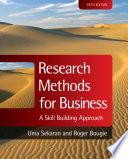
INTRODUCTION TO BEHAVIORAL RESEARCH METHODS 5ED
- ISBN 13 : 9780136038726
- Judul : INTRODUCTION TO BEHAVIORAL RESEARCH METHODS 5ED
- Pengarang : DORFMAN,
- Kategori : ECONOMY
- Penerbit : Prentice Hall
- Bahasa : Inggris
- Tahun : 2008
-
Ketersediaan :




The second edition of this innovative textbook illustrates research methods for library and information science, describing the most appropriate approaches to a question—and showing you what makes research successful. • Provides comprehensive coverage of research methods used in library and information science, discussing their strengths, weaknesses, and biases • Presents completely updated content that includes several new chapters on innovative methods (mixed methods research and social network analysis) and more than half of the methods chapters focus on critiquing new research studies • Covers both qualitative and quantitative methods as well as mixed methods • Analyzes examples of award-winning library research
Written for the serious practicing librarian researcher and the LIS student, this volume fills the need for a guide focused specifically on information and library science research methods.

This Book Introduces Post-Graduate Students And Researchers To The Basics And Techniques Of Research Methods In English Literature And Language. It Covers Qualitative And Quantitative Methodology And Includes The Following Topics:" Definition, Aims And Objectives Of Research" Materials And Tools Of Research" Background Knowledge Of The Researcher" Methods Of Research (I) Biography (Ii) Bibliography And Textual Criticism (Iii) Modern Critical Theories" The Literary Thesis" Bibliographical ReferencesThe Book Will Be Most Useful For Teachers, Students, Program Administrators And Researchers In Their Research Work. It Can Be Used As A Basic Text For Research Methodology Paper In M.A. And M.Phil. And Pre-Ph.D. Courses.
This Book Introduces Post-Graduate Students And Researchers To The Basics And Techniques Of Research Methods In English Literature And Language.

Research Methods in Physical Activity, Seventh Edition, systematically guides students through the research process, introducing methods and tools specifically for kinesiology and exercise science disciplines, including the subdisciplines of physical therapy, rehabilitation, and occupational therapy. The seventh edition leads students and novice researchers to research competency with the distinctive humor that has become a trademark of this internationally recognized text. This text provides step-by-step information for every aspect of the research process, from identifying and devising research questions to analyzing data and compiling results for presentation. Methods for qualitative, quantitative, and mixed-methods research approaches are addressed, and real-world research questions—including historical, experimental, epidemiological, and philosophical—are presented by scholarly contributors who give suggestions for approaches to follow. Photos, anecdotes, and humorous stories are used throughout the text to put students at ease and emphasize key points through practical applications. Enhancements to the seventh edition include the following: • Updated information and techniques for electronic searches to ensure students use best research practices • New information on meta-analysis and the benefits of journal-style writing that teach readers to evaluate and prepare data for scholarly journals and publication • Special attention to ethical issues to help readers understand the regulations involved in using human and animal subjects • New information on logistic regression that aids in the understanding of complex ideas • Further explanation of qualitative and mixed-methods research approaches, in addition to quantitative approaches, to ensure readers use the most appropriate methodology for their research The content of the seventh edition maintains and expands upon the logical content progression that has made Research Methods in Physical Activity the leading text in the field. Part I presents an overview of the research process, including problem development, preparation of the research plan, and understanding ethical issues in research and writing. Part II introduces statistical and measurement issues in research, and part III presents various types of or approaches to research and methodology from expert researchers in the field. Part IV includes a writing guide for result findings and details how to develop and organize research papers and presentations. Statistical tables and guides are available in the appendix. To aid instructors, Research Methods in Physical Activity, Seventh Edition, includes a suite of ancillary materials featuring an instructor guide, test package, an extra data set for instructors who wish to create specialized learning activities, and presentation package plus image bank. Research Methods in Physical Activity, Seventh Edition, instills in students the confidence to devise, collect, analyze, and present their research in a competent manner by systematically guiding them through the research process. It is an essential text for all emerging researchers in physical activity.
This text provides step-by-step information for every aspect of the research process, from identifying and devising research questions to analyzing data and compiling results for presentation.

Research Methods for Business: A Skill Building Approach,5th Edition is a concise and straightforward introduction for students to the world of business research. The skill building approach provides students with practical perspectives on how research can be applied in real business situations. Maintaining Uma Sekaran’s popular and accessible style of writing, Roger Bougie draws upon his extensive experience of the field to present an up-to-date guide on business research for the aspiring future manager. The fifth edition has a new chapter on qualitative data analysis, featuring a case study of the research process. The chapters on scientific investigation, the broad problem area and defining the problem statement, measurement of variables, experimental designs, sampling, and quantitative data analysis have all been substantially revised. Additional real-life cases have been included and examples are taken from Europe, Asia and the US to give students a comprehensive view of modern business research methods.
The text is supplemented by a companion website at www.wileyeurope.com/college/sekaran which includes: A fully updated Instructor’s Guide Data sets PowerPoint lecture slides for each chapter Lecturers’ Testbank with multiple choice, ...

This new textbook surveys new and emergent methods for doing research in critical security studies, thereby filling a large gap in the literature of this emerging field. New or critical security studies is growing as a field, but still lacks a clear methodology; the diverse range of the main foci of study (culture, practices, language, or bodies) means that there is little coherence or conversation between these four schools or approaches. In this ground-breaking collection of fresh and emergent voices, new methods in critical security studies are explored from multiple perspectives, providing practical examples of successful research design and methodologies. Drawing upon their own experiences and projects, thirty-three authors address the following turns over the course of six comprehensive sections: Part I: Research Design Part II: The Ethnographic Turn Part III: The Practice Turn Part IV: The Discursive Turn Part V: The Corporeal Turn Part VI: The Material Turn This book will be essential reading for upper-level students and researchers in the field of critical security studies, and of much interest to students of sociology, ethnography and IR.
Drawing upon their own experiences and projects, thirty-three authors address the following turns over the course of six comprehensive sections: Part I: Research Design Part II: The Ethnographic Turn Part III: The Practice Turn Part IV: The ...

A practical guide to research for architects and designers—now updated and expanded! From searching for the best glass to prevent glare to determining how clients might react to the color choice for restaurant walls, research is a crucial tool that architects must master in order to effectively address the technical, aesthetic, and behavioral issues that arise in their work. This book's unique coverage of research methods is specifically targeted to help professional designers and researchers better conduct and understand research. Part I explores basic research issues and concepts, and includes chapters on relating theory to method and design to research. Part II gives a comprehensive treatment of specific strategies for investigating built forms. In all, the book covers seven types of research, including historical, qualitative, correlational, experimental, simulation, logical argumentation, and case studies and mixed methods. Features new to this edition include: Strategies for investigation, practical examples, and resources for additional information A look at current trends and innovations in research Coverage of design studio–based research that shows how strategies described in the book can be employed in real life A discussion of digital media and online research New and updated examples of research studies A new chapter on the relationship between design and research Architectural Research Methods is an essential reference for architecture students and researchers as well as architects, interior designers, landscape architects, and building product manufacturers.
Features new to this edition include: Strategies for investigation, practical examples, and resources for additional information A look at current trends and innovations in research Coverage of design studio–based research that shows how ...

Research Methods in Human-Computer Interaction is a comprehensive guide to performing research and is essential reading for both quantitative and qualitative methods. Since the first edition was published in 2009, the book has been adopted for use at leading universities around the world, including Harvard University, Carnegie-Mellon University, the University of Washington, the University of Toronto, HiOA (Norway), KTH (Sweden), Tel Aviv University (Israel), and many others. Chapters cover a broad range of topics relevant to the collection and analysis of HCI data, going beyond experimental design and surveys, to cover ethnography, diaries, physiological measurements, case studies, crowdsourcing, and other essential elements in the well-informed HCI researcher's toolkit. Continual technological evolution has led to an explosion of new techniques and a need for this updated 2nd edition, to reflect the most recent research in the field and newer trends in research methodology. This Research Methods in HCI revision contains updates throughout, including more detail on statistical tests, coding qualitative data, and data collection via mobile devices and sensors. Other new material covers performing research with children, older adults, and people with cognitive impairments. Comprehensive and updated guide to the latest research methodologies and approaches, and now available in EPUB3 format (choose any of the ePub or Mobi formats after purchase of the eBook). Expanded discussions of online datasets, crowdsourcing, statistical tests, coding qualitative data, laws and regulations relating to the use of human participants, and data collection via mobile devices and sensors New material on performing research with children, older adults, and people with cognitive impairments, two new case studies from Google and Yahoo!, and techniques for expanding the influence of your research to reach non-researcher audiences, including software developers and policymakers
Continual technological evolution has led to an explosion of new techniques and a need for this updated 2nd edition, to reflect the most recent research in the field and newer trends in research methodology.